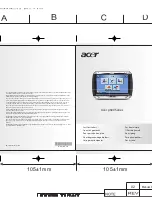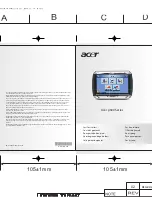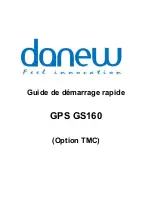
4-32
GTN 725/750 Pilot’s Guide
190-01007-03 Rev. Q
Foreword
Getting
Started
Audio &
Xpdr Ctrl
Com/Nav
FPL
Direct-To
Proc
Charts
Wpt Info
Map
Traffic
Terrain
Weather
Nearest
Services/
Music
Utilities
System
Messages
Symbols
Appendix
Index
Disabling vertical navigation:
• Invalidates required vertical speed, time to Top of Descent (TOD)/Bottom of
Descent (BOD), and vertical deviation data
• Removes vertical deviation and required vertical speed indications from the
PFD
VS Required,Time to TOD/BOD,
and Vertical Deviation fields
display dashes when VNAV is off
VNAV automatically re-enables when the pilot initiates a Direct-To.
4.3.3.4
Altitude Constraints
NOTE:
Altitude constraints loaded from the database are jet altitudes.
Some adjustment may be necessary for other types of aircraft. For the
adjustment procedure, refer to the published chart.
Depending on the specific instance, altitude constraints are either manually
entered into the Active Flight Plan page, or automatically retrieved from the
published altitudes in the navigation database.
Constraint values display in MSL or flight level (FL). Constraints at airports
may be specified as MSL or AGL.
White Text Only
(No Constraint)
Cyan Text with Restriction
Bar and Pencil Icon
(Modified Constraint)
Cyan Text with Snowflake Icon
(Constraint with Temperature
Compensated)
Figure 4-42 Waypoint Altitude Constraints
The system automatically uses altitudes loaded with arrival and approach
procedures (up to and including the FAF) for computing vertical deviation
guidance. These values, accompanied by an altitude restriction bar(s), display
in cyan. The position of the value (above or below the bar, or between two
bars) denotes the required aircraft altitude relative to that constraint. Dual values
annunciate when the aircraft needs to cross between two altitudes.















































